Zhengyang Duan
Super-resolution imaging using super-oscillatory diffractive neural networks
Jun 27, 2024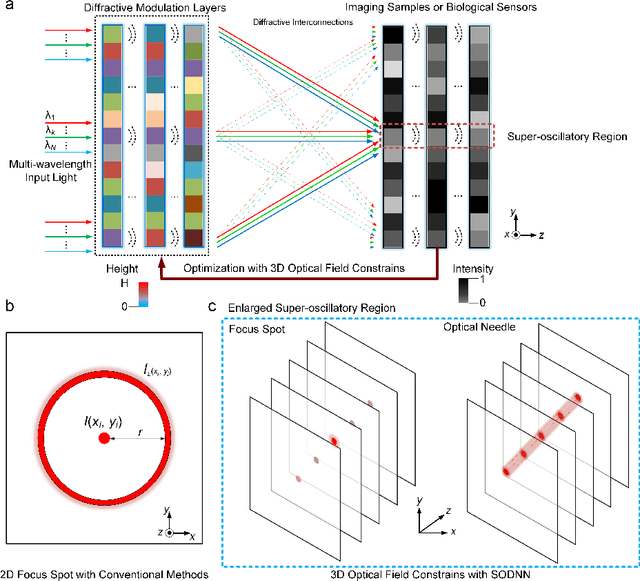
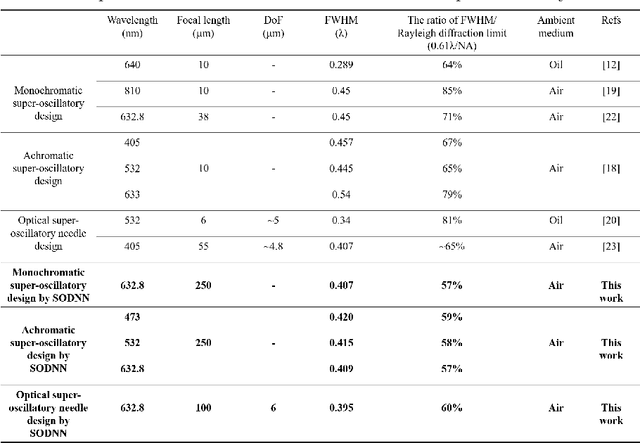
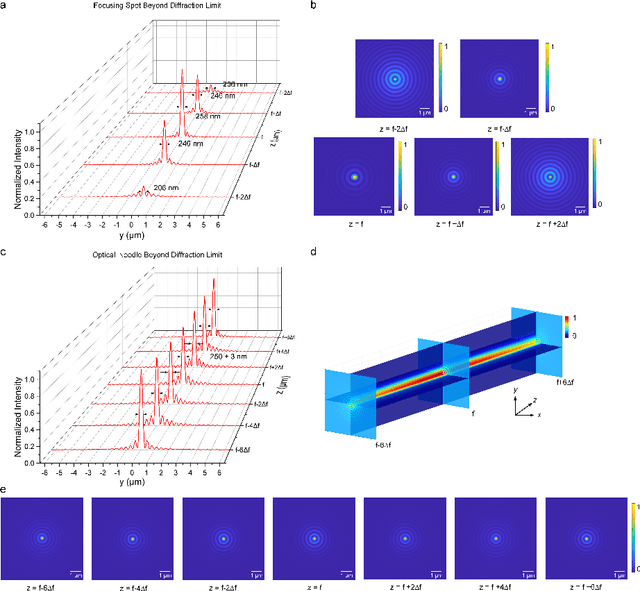
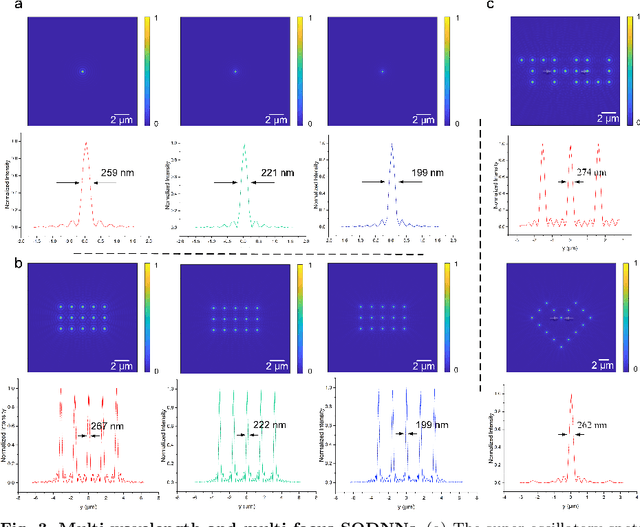
Abstract:Optical super-oscillation enables far-field super-resolution imaging beyond diffraction limits. However, the existing super-oscillatory lens for the spatial super-resolution imaging system still confronts critical limitations in performance due to the lack of a more advanced design method and the limited design degree of freedom. Here, we propose an optical super-oscillatory diffractive neural network, i.e., SODNN, that can achieve super-resolved spatial resolution for imaging beyond the diffraction limit with superior performance over existing methods. SODNN is constructed by utilizing diffractive layers to implement optical interconnections and imaging samples or biological sensors to implement nonlinearity, which modulates the incident optical field to create optical super-oscillation effects in 3D space and generate the super-resolved focal spots. By optimizing diffractive layers with 3D optical field constraints under an incident wavelength size of $\lambda$, we achieved a super-oscillatory spot with a full width at half maximum of 0.407$\lambda$ in the far field distance over 400$\lambda$ without side-lobes over the field of view, having a long depth of field over 10$\lambda$. Furthermore, the SODNN implements a multi-wavelength and multi-focus spot array that effectively avoids chromatic aberrations. Our research work will inspire the development of intelligent optical instruments to facilitate the applications of imaging, sensing, perception, etc.
Dual adaptive training of photonic neural networks
Dec 09, 2022Abstract:Photonic neural network (PNN) is a remarkable analog artificial intelligence (AI) accelerator that computes with photons instead of electrons to feature low latency, high energy efficiency, and high parallelism. However, the existing training approaches cannot address the extensive accumulation of systematic errors in large-scale PNNs, resulting in a significant decrease in model performance in physical systems. Here, we propose dual adaptive training (DAT) that allows the PNN model to adapt to substantial systematic errors and preserves its performance during the deployment. By introducing the systematic error prediction networks with task-similarity joint optimization, DAT achieves the high similarity mapping between the PNN numerical models and physical systems and high-accurate gradient calculations during the dual backpropagation training. We validated the effectiveness of DAT by using diffractive PNNs and interference-based PNNs on image classification tasks. DAT successfully trained large-scale PNNs under major systematic errors and preserved the model classification accuracies comparable to error-free systems. The results further demonstrated its superior performance over the state-of-the-art in situ training approaches. DAT provides critical support for constructing large-scale PNNs to achieve advanced architectures and can be generalized to other types of AI systems with analog computing errors.
Optical multi-task learning using multi-wavelength diffractive deep neural networks
Nov 30, 2022Abstract:Photonic neural networks are brain-inspired information processing technology using photons instead of electrons to perform artificial intelligence (AI) tasks. However, existing architectures are designed for a single task but fail to multiplex different tasks in parallel within a single monolithic system due to the task competition that deteriorates the model performance. This paper proposes a novel optical multi-task learning system by designing multi-wavelength diffractive deep neural networks (D2NNs) with the joint optimization method. By encoding multi-task inputs into multi-wavelength channels, the system can increase the computing throughput and significantly alle-viate the competition to perform multiple tasks in parallel with high accuracy. We design the two-task and four-task D2NNs with two and four spectral channels, respectively, for classifying different inputs from MNIST, FMNIST, KMNIST, and EMNIST databases. The numerical evaluations demonstrate that, under the same network size, mul-ti-wavelength D2NNs achieve significantly higher classification accuracies for multi-task learning than single-wavelength D2NNs. Furthermore, by increasing the network size, the multi-wavelength D2NNs for simultaneously performing multiple tasks achieve comparable classification accuracies with respect to the individual training of multiple single-wavelength D2NNs to perform tasks separately. Our work paves the way for developing the wave-length-division multiplexing technology to achieve high-throughput neuromorphic photonic computing and more general AI systems to perform multiple tasks in parallel.
Aggregated Network for Massive MIMO CSI Feedback
Jan 17, 2021


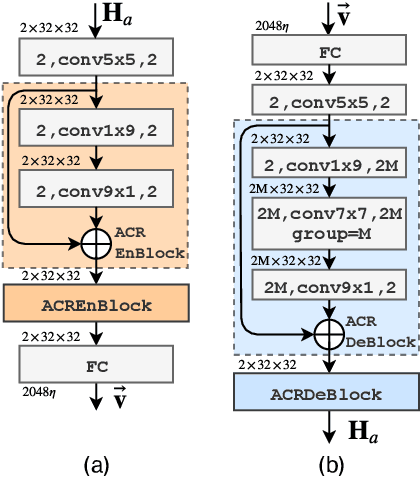
Abstract:In frequency division duplexing (FDD) mode, it is necessary to send the channel state information (CSI) from user equipment to base station. The downlink CSI is essential for the massive multiple-input multiple-output (MIMO) system to acquire the potential gain. Recently, deep learning is widely adopted to massive MIMO CSI feedback task and proved to be effective compared with traditional compressed sensing methods. In this paper, a novel network named ACRNet is designed to boost the feedback performance with network aggregation and parametric RuLU activation. Moreover, valid approach to expand the network architecture in exchange of better performance is first discussed in CSI feedback task. Experiments show that ACRNet outperforms loads of previous state-of-the-art feedback networks without any extra information.
 Add to Chrome
Add to Chrome Add to Firefox
Add to Firefox Add to Edge
Add to Edge